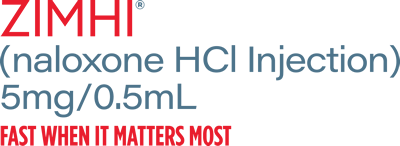ABSORPTION WHEN IT
MATTERS MOST
NALOXONE
ABSORPTION WHEN IT MATTERS
MOST
IN A HYPOXIC STATE,
EVERY MOMENT MATTERS
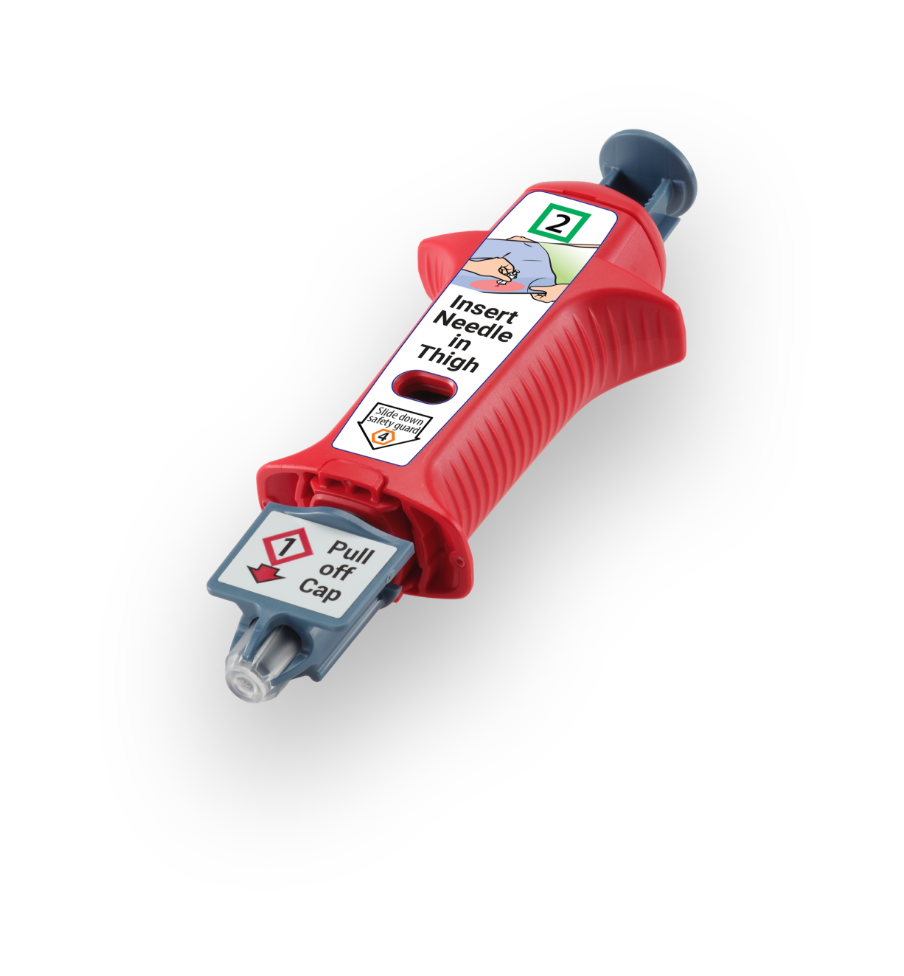
ONE 5-mg INTRAMUSCULAR DOSE PROVIDES A HIGHER PLASMA CONCENTRATION
AND EXPOSURE COMPARED WITH A 2-mg INTRAMUSCULAR DOSE5
Mean plasma concentration of naloxone over 30 minutes
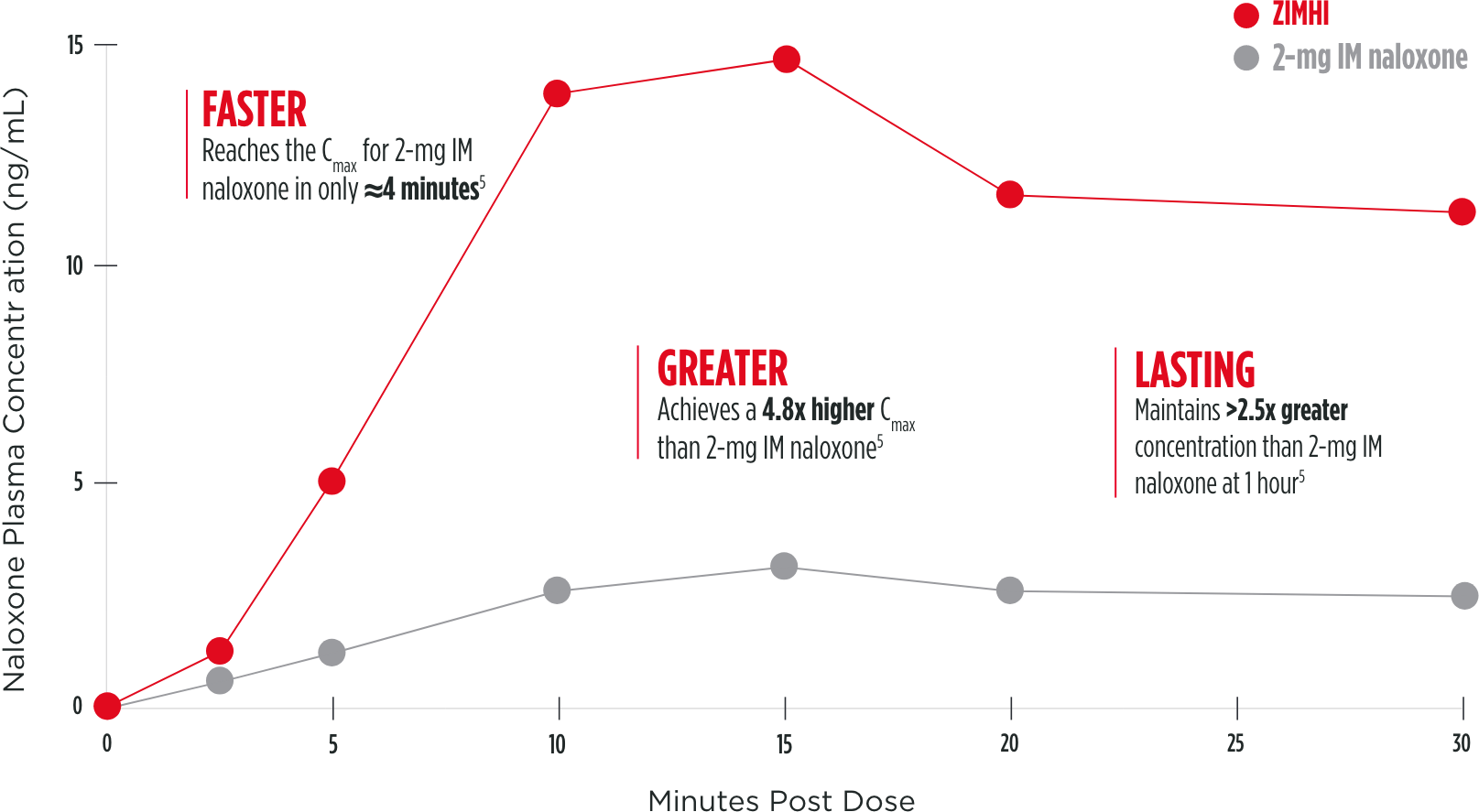
Note: The clinical relevance of these pharmacokinetic data is unknown. These data do not account for interpatient variability.
Cmax=maximum concentration; IM=intramuscular.
Mean plasma concentration of
naloxone over 30 minutes

Note: The clinical relevance of these
pharmacokinetic data is unknown. These data
do not account for interpatient variability.
Cmax=maximum concentration; IM=intramuscular.

EVERY MOMENT MATTERS
The strength to pull them back from an overdose
WHY A HIGH NALOXONE DOSE?
VISIT THE ZIMHI TRAINING HUB
ORDER ZIMHI

EVERY
MOMENT
MATTERS
The strength to pull them
back from an overdose
WHY A HIGH NALOXONE DOSE?
VISIT THE ZIMHI TRAINING HUB
ORDER ZIMHI

EVERY
MOMENT
MATTERS
The strength to pull them
back from an overdose
WHY A HIGH NALOXONE DOSE?
VISIT THE ZIMHI TRAINING HUB
ORDER ZIMHI
In an opioid overdose emergency,
ZIMHI MAY MAKE ALL
THE DIFFERENCE


In an opioid overdose emergency,
ZIMHI MAY
MAKE ALL THE
DIFFERENCE


In an opioid overdose emergency,
ZIMHI MAY
MAKE ALL THE
DIFFERENCE
References: 1. Spinal Cord. How long can the brain go without oxygen? What happens? Accessed October 28, 2020. https://www.spinalcord.com/blog/what-happens-to-the-brain-after-a-lack-of-oxygen 2. Family Caregiver Alliance. Hypoxic-anoxic brain injury. Updated 2020. Accessed October 28, 2020. https://www.caregiver.org/hypoxic-anoxic-brain-injury 3. Medline Plus. CPR—adult and child after onset of puberty. Updated October 8, 2020. Accessed October 28, 2020. https://medlineplus.gov/ency/article/000013.htm 4. Mell HK, Mumma SN, Hiestand B, Carr BG, Holland T, Stopyra J. Emergency medical services response times in rural, suburban, and urban areas. JAMA Surg. 2017;152(10):983-984. doi:10.1001/jamasurg.2017.2230 5. ZIMHI. Prescribing information.
INDICATION
ZIMHI is a prescription medicine used in adults and children for the treatment of an opioid emergency, such as an overdose or a possible overdose with signs of breathing problems and severe sleepiness or not being able to respond. ZIMHI is to be given right away by a caregiver and does not take the place of emergency medical care. Get emergency medical help right away after the first dose of ZIMHI, even if the person wakes up.
IMPORTANT SAFETY INFORMATION
Do not use ZIMHI if you are allergic to naloxone hydrochloride or any of the ingredients in ZIMHI.
ZIMHI is used to temporarily reverse the effects of opioid medicines. The medicine in ZIMHI has no effect in people who are not taking opioid medicines.
Use ZIMHI right away if you or your caregiver think signs or symptoms of an opioid emergency are present, even if you are not sure, because an opioid emergency can cause severe injury or death.
Family members, caregivers, or other people who may have to use ZIMHI in an opioid emergency should know where ZIMHI is stored and how to give ZIMHI before an opioid emergency happens.
Get emergency medical help right away after using the first dose of ZIMHI. Rescue breathing or CPR may be given while waiting for emergency medical help.
The signs and symptoms of an opioid emergency can return within several minutes after ZIMHI is given. If this happens, give additional injections using a new ZIMHI prefilled syringe every 2 to 3 minutes and continue to closely watch the person until emergency help is received.
ZIMHI may cause serious side effects, including sudden opioid withdrawal symptoms, which may include: body aches, fever, sweating, runny nose, sneezing, goose bumps, yawning, weakness, shivering or trembling, nervousness, restlessness or irritability, diarrhea, nausea or vomiting, stomach cramping, increased blood pressure, or increased heart rate.
Other common side effects of ZIMHI include dizziness and injection site redness.
In infants under 4 weeks old who have been receiving opioids regularly, sudden opioid withdrawal may be life-threatening if not treated the right way. Signs and symptoms include: seizures, crying more than usual, and increased reflexes.
These are not all of the possible side effects of ZIMHI. Call your doctor for medical advice about side effects.
To report SUSPECTED ADVERSE REACTIONS, call 1-800-230-3935 or FDA at 1-800-FDA-1088 or www.fda.gov/medwatch.
IMPORTANT SAFETY INFORMATION and INDICATION for ZIMHI™
As the duration of action of naloxone hydrochloride is shorter than many opioids, keep the patient under continued surveillance and administer repeated doses of naloxone using a new ZIMHI device, as necessary, while awaiting emergency medical assistance.
Reversal of respiratory depression caused by partial agonists or mixed agonists/antagonists, such as buprenorphine and pentazocine may be incomplete. Repeat doses of ZIMHI may be required.
IMPORTANT SAFETY INFORMATION and INDICATION for ZIMHI™
